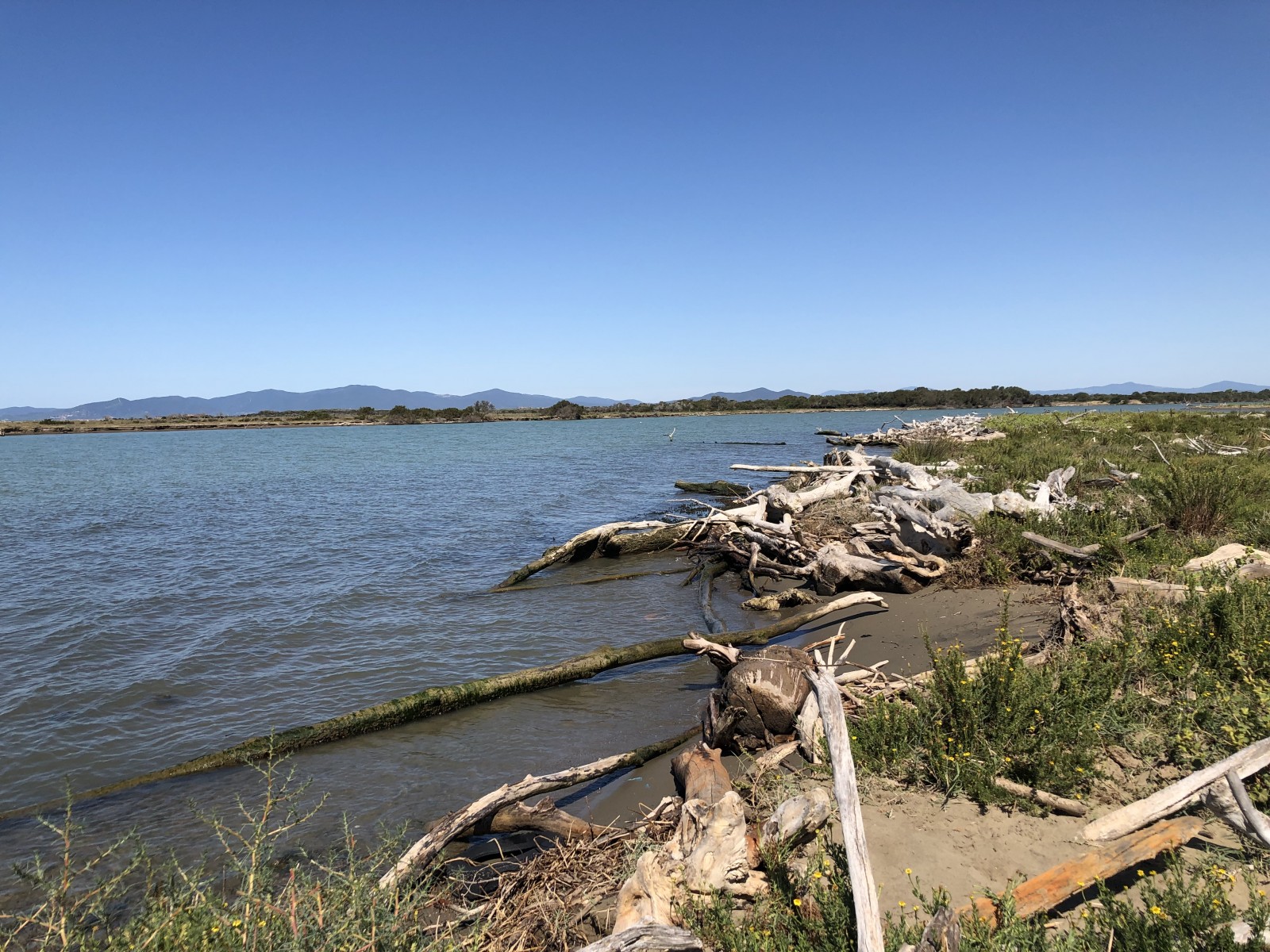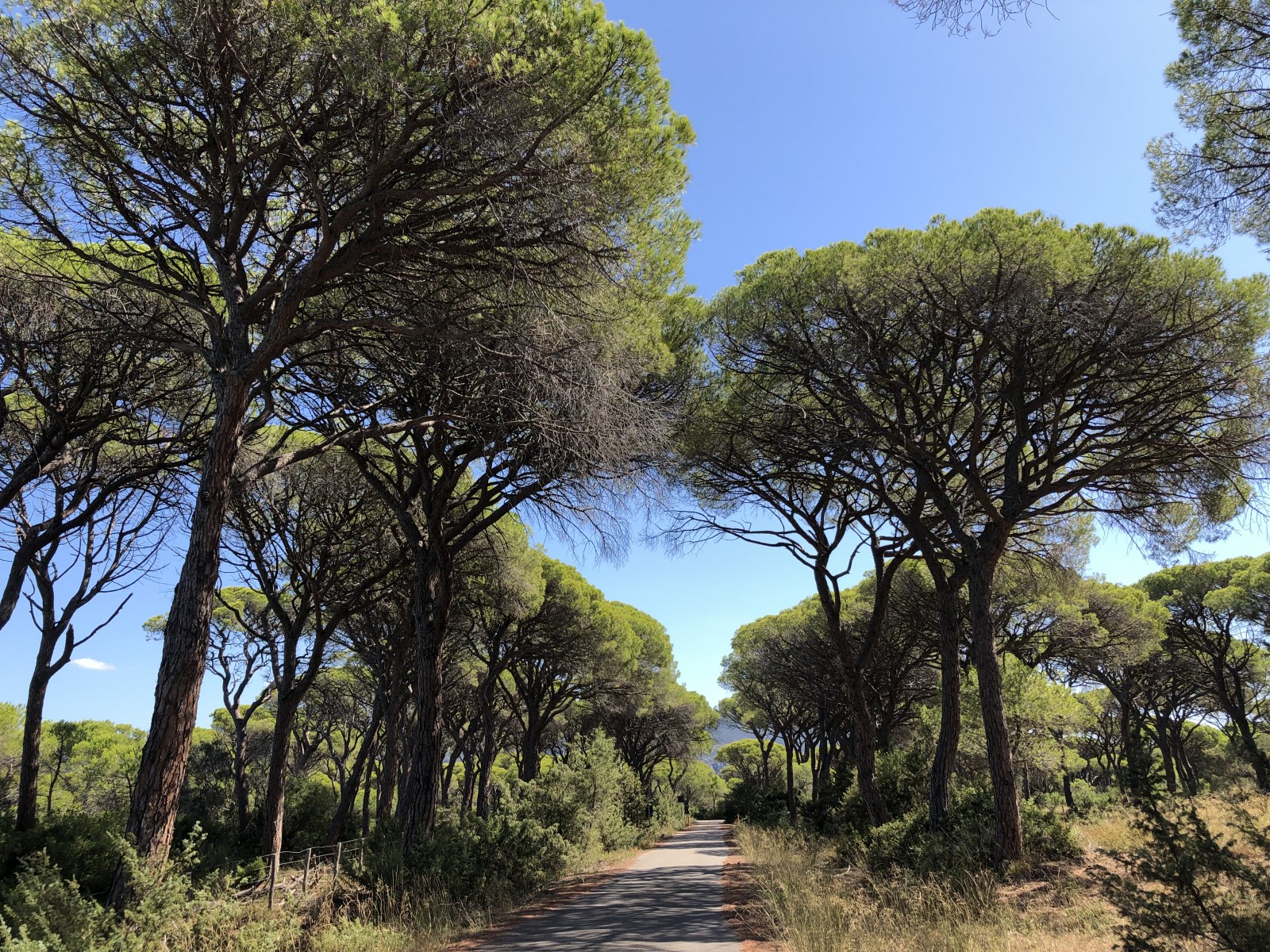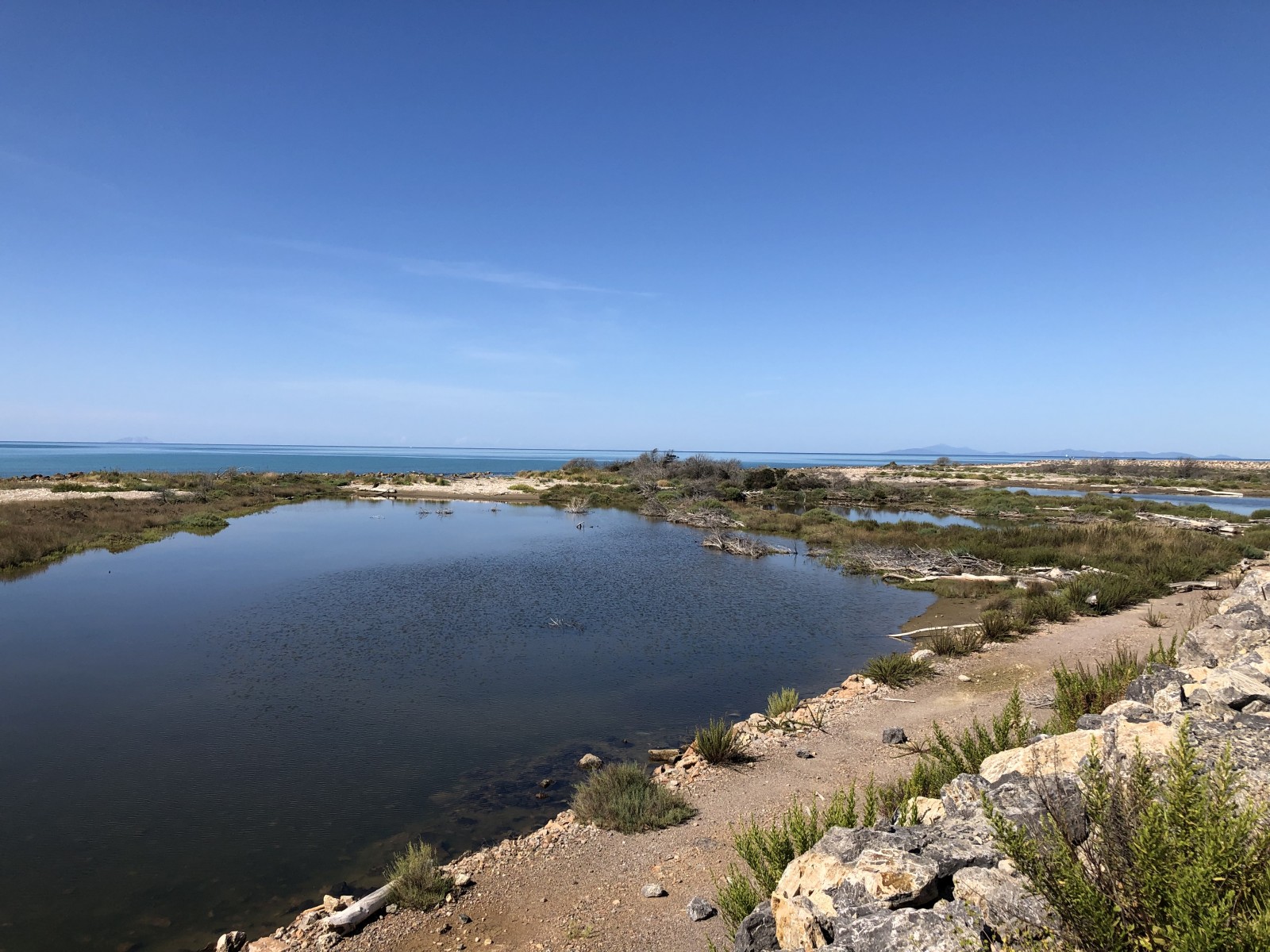Beschreibung
This Bocca d'Ombrone walk provides a range of habitats in a relatively short 4 km walk and is interesting year-round though most active during migration. Good sea watch opportunities (Basstölpel & Sepiasturmtaucher and Mittelmeer-Sturmtaucher) and during wader migration it is possible to see a good diversity of shorebirds, and passerines such as wagtails and pipits. Among the interesting birds you can see here are Kranich, Fischadler, Rosaflamingo, Regenbrachvogel, Großer Brachvogel, Dunkler Wasserläufer, Kampfläufer, Korallenmöwe and Blauracke.
_________________________
Italiano: L'area della Bocca d'Ombrone offre una varietà di habitat in un percorso relativamente breve di 4 km ed è interessante tutto l'anno, sebbene sia più attiva durante la migrazione.
Details
Zugang
Park at the Marina di Alberese within the Parco Maremma (Click on the P in the map to go there directly). From the parking lot you walk north either a trail just off the beach about 1.5 km north to the rivermouth or along a paved path through the pine woodlands accessed just before the parking area. These two paths connect once you reach the river near a bird hide that overlooks the small estuary.
_________________________
Italiano: Si può parcheggiare a Marina di Alberese all'interno del Parco Maremma (cliccare sulla P nella mappa per arrivarci direttamente). Dal parcheggio si cammina verso nord, seguendo un sentiero appena fuori dalla spiaggia, circa 1,5 km a nord fino alla foce del fiume, oppure lungo un sentiero asfaltato attraverso la pineta, a cui si accede appena prima del parcheggio. Questi due sentieri si collegano una volta raggiunto il fiume, vicino a un osservatorio per uccelli che si affaccia sul piccolo estuario.
Terrain und Habitat
Wald , Feuchtgebiet , Strand , Schlammflächen , Vereinzelte Bäume und Büsche , Fluss , Meer , DünenBedingungen
FlachRundweg
JaIst ein Spektiv nützlich?
Möglicherweise hilfreichGute Beobachtungszeit
GanzjährigBeste Beobachtungszeit
Frühjahr , Frühjahrszug , HerbstzugRoute
Schmaler Pfad , Normaler WegSchwierigkeitsgrad der Tour
EinfachErreichbarkeit
zu Fuß , Fahrrad , RollstuhlBeobachtungshütten oder -türme
JaZusätzliche Informationen
There is a small fee to enter the Maremma Regional Park (5€, the ticket can also be purchased online in autumn and winter, while in spring and summer only at the Alberese visitor centre in Via del Bersagliere 7/9). The park and particuarly the beach will be crowded on summer weekends. There is a small restaurant and shop near the parking area open during the summer season (not sure of winter hours).
* The route currently ends at Ponte Chiavica (Fosso Seccatore) due to maintenance work.
_________________________
Italiano: L'ingresso al Parco Regionale della Maremma è a pagamento (5€, il biglietto è acquistabile anche online in autunno ed inverno, mentre in primavera ed estate solo al centro visite di Alberese in Via del Bersagliere 7/9). Il parco e in particolare la spiaggia saranno affollati nei fine settimana estivi. Vicino al parcheggio si trovano un piccolo ristorante e un negozio aperti durante la stagione estiva.




